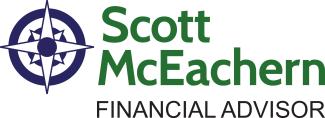The 4 Elements of a Retirement Plan
The retirement landscape in Canada is made up of a three legged stool. The first leg refers to the minimum level of income provided through Old Age Security and the Guaranteed Income Supplement. The second leg refers to Canada Pension Plan, designed to replace a portion of working income. Finally, the third leg is comprised of what you save on your own with the help of tax-assisted savings, like an RRSP, TFSA, or pension plan at work. With expanding lifespans and increasing retirement costs, plus the potential of pension plans changing, retirement will require serious thought and planning in advance to ensure your income will last a lifetime. Here are the four essential elements of a sound retirement plan:
Set Clearly Defined Goals
With an increasing life expectancy, it’s no longer enough to simply state, “I want to retire at age 65” as a goal. In order to inspire a well-conceived plan, and the will to faithfully execute it, you need a clear vision of your life in retirement.
- Do you plan on actually retiring; or would you like to work in some other field?
- How will you live in retirement?
- Where will you live?
- What would you like to accomplish?
As you get closer to your retirement goal, your vision will become clearer and more focused. Along the way, your retirement goal becomes your investment benchmark, guiding your investment decisions based on where you are in relation to your goal. Although your entire retirement picture may not be clear right now, the sooner you start planning and saving, the easier it will be to achieve those goals.
Calculate Your Retirement Costs
One of the more popular rules suggests that retirees will need just 70% to 80% of their pre-retirement income to maintain their standard of living. The major flaw with this rule is it doesn’t account for the true cost of aging. In calculating the cost of retirement, the equation has become more difficult due to the new reality of longer lifespans which can also mean higher healthcare or assisted living costs. The cost of your retirement needs to factor realistic spending assumptions based on your goals and desired lifestyle with contingencies for healthcare costs and unexpected expenses. However, once again, if you start planning early enough, with these thoughts in the back of your mind, they shouldn’t be very unexpected by the time you get to retirement. Healthcare expenses will be the norm.
Once you know the cost of your retirement you can more accurately calculate how much you will need at retirement, which can become your accumulation goal.
Long-Term Investment Strategy
Accumulating enough capital to provide lifetime income sufficiency is a daunting task, made more difficult in an environment of low returns on savings and increased stock market volatility. It requires a serious long-term investment strategy with the confidence and discipline to follow the plan. Start with a specific investment objective- which can be stated as the return on investment that must be achieved to meet your capital need.
The next step is to develop a risk profile that will enable you to match your tolerance for risk with a portfolio of investments that can reasonably expect to achieve your objective. Then, through broad diversification within the asset classes, you can reduce portfolio volatility and achieve more stable long-term returns.
Tax-Diversification
For decades we have been told that the best way to accumulate capital for retirement is through tax deferred savings vehicles, such as an RRSP. Although it still makes sense for accumulating capital, it doesn’t take into account the tax consequences of income withdrawals and its impact on the total spendable income available in retirement. Retirement planning used to be almost entirely about capital accumulation; however, with the possibility of living 30 years or more in retirement, the emphasis is now on managing your income during retirement. If your only income source is an RRSP, your income will be taxed as ordinary income. By using other tools like the TFSA and diversified income sources you may be able to minimize your taxes in retirement which will help make your income last longer.

